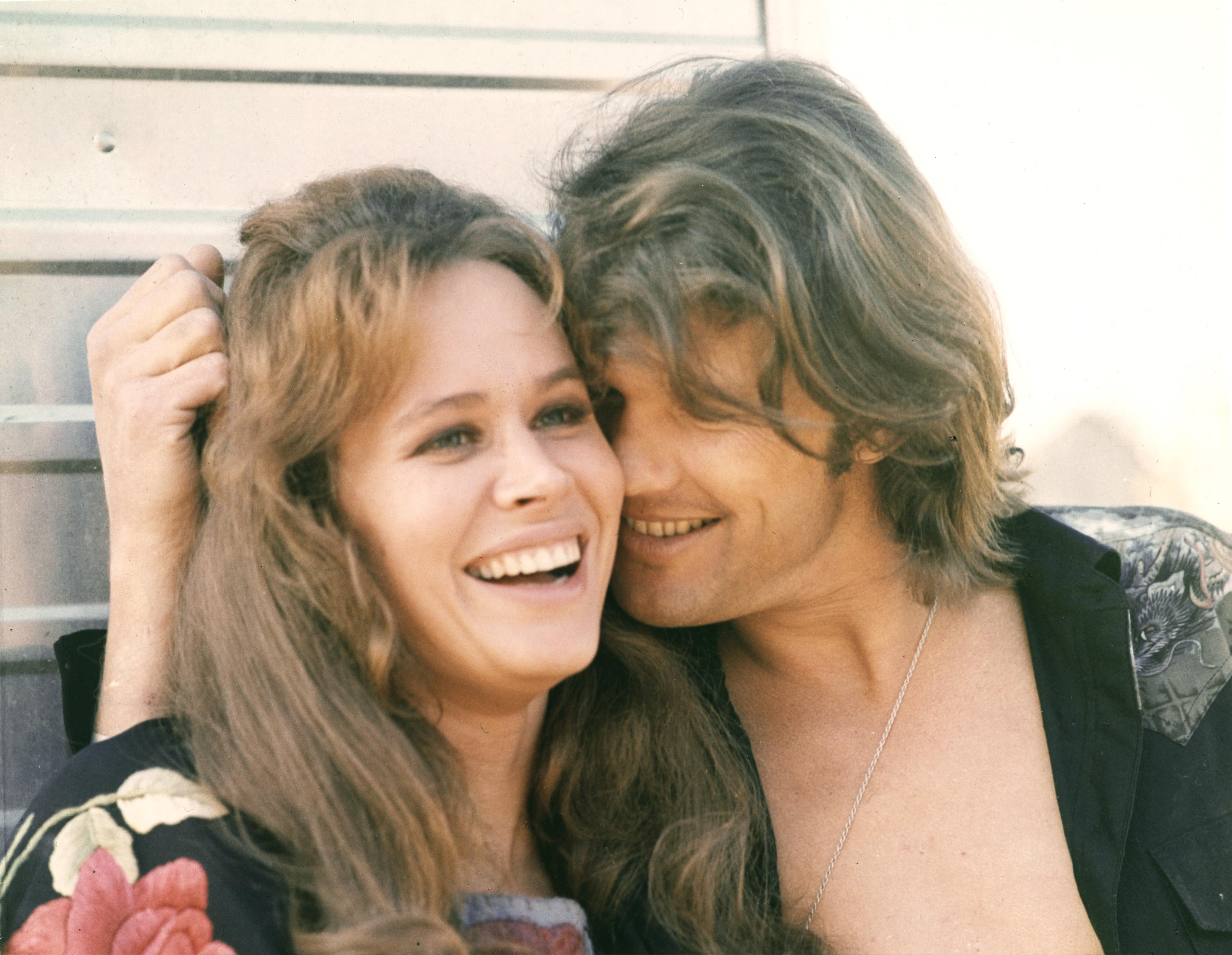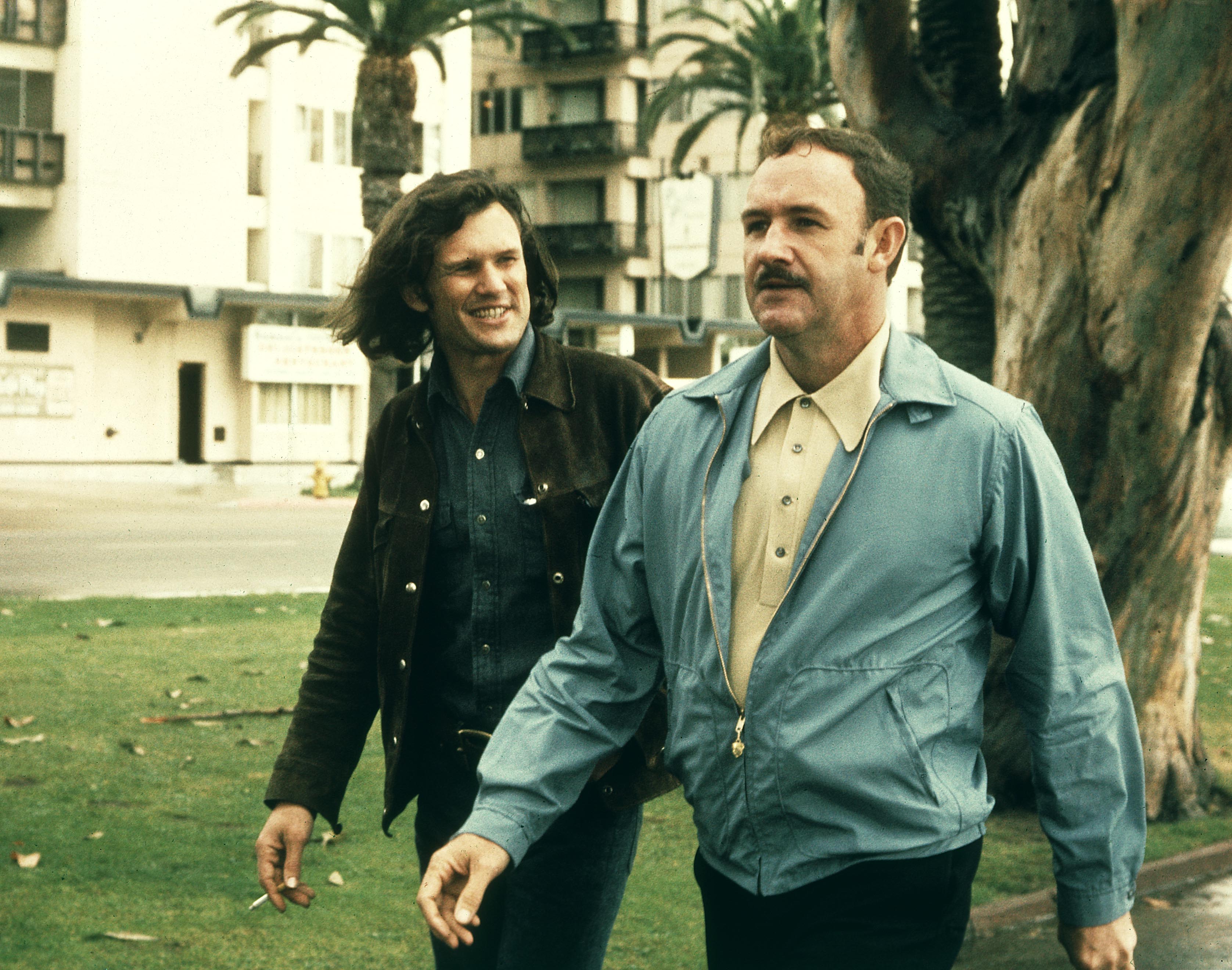LA, drugs and rock’n’roll: Why Kris Kristofferson’s forgotten Cisco Pike has become a cult film
A flop when it was released 50 years ago, ‘Cisco Pike’ wasn’t just the singer-songwriter’s first starring role, says Leonie Cooper, it deserves to be heralded as one of the Seventies’ best films


Your support helps us to tell the story
From reproductive rights to climate change to Big Tech, The Independent is on the ground when the story is developing. Whether it's investigating the financials of Elon Musk's pro-Trump PAC or producing our latest documentary, 'The A Word', which shines a light on the American women fighting for reproductive rights, we know how important it is to parse out the facts from the messaging.
At such a critical moment in US history, we need reporters on the ground. Your donation allows us to keep sending journalists to speak to both sides of the story.
The Independent is trusted by Americans across the entire political spectrum. And unlike many other quality news outlets, we choose not to lock Americans out of our reporting and analysis with paywalls. We believe quality journalism should be available to everyone, paid for by those who can afford it.
Your support makes all the difference.In the early Seventies, everything was going right for Kris Kristofferson. The country music world had embraced the hard-grafting singer-songwriter, and covers of his songs – “Me and Bobby McGee”; “Help Me Make It Through the Night”; “Sunday Mornin’ Comin’ Down” – had achieved crossover success.
By 1971, he was riding high in the Billboard charts as a solo artist too, and back in 1970, he’d also shot his first movie, Cisco Pike. The film wasn’t released until 1972, but it remains an incredible time capsule. As Kristofferson’s faded musician – the titular Cisco Pike – strides beside the murky, pre-gentrification canals of Venice, Los Angeles looks a far cry from the millionaire’s playground it is now. Amid the scuzzy, run-down streets, the only thing that looks good in the film’s opening scenes is Kristofferson himself. The star is immaculate in a chambray shirt, denim jeans and cowboy boots; his glossy chestnut hair bounces on brown suede-clad shoulders. Carrying a guitar case in one hand, Pike is a handsome amalgam of the butch but foppish LA singer-songwriters who were just about to take over the world, from Jackson Browne and The Eagles’ Glenn Frey to James Taylor.
Yet despite plugging directly into the rock’n’roll zeitgeist, Cisco Pike was a mammoth flop, tanking at the box office and scoring a host of bad reviews. It’s culter than cult now, but at the time The New York Times’s Vincent Canby slammed it as “banal”, caustically adding that “it takes all the discipline I can muster to keep from immediately walking out of the theatre”. Watching it half a century later, I find it hard to see why the film elicited such loathing, especially considering its fabulous and deeply cool cast, which also numbers Gene Hackman, Harry Dean Stanton and Karen Black. Evidently, 1972 was still too soon to have a dapper drug dealer as a lead character, and the rough and ready Los Angeles of wayward hippies, dope smokers, rock stars and groupies still too much for some viewers to enjoy this pacy caper. See, Kristofferson’s Pike isn’t just a one-time rock star, he’s also being blackmailed by Hackman’s bent cop to shift a hell of a lot of weed.
Following in the slipstream of the American New Wave of cinema, spearheaded by 1967’s Bonnie & Clyde and 1969’s Easy Rider, Cisco Pike came from a new generation of young filmmakers – Pike’s twentysomething first-time director Bill L Norton included – who took their unconventional ideas to the big screen, influenced by European arthouse cinema and keen to tell stories that mattered to their generation.
At a tight hour and a half, Cisco Pike leans on the lighter side of such innovative filmmaking, adding a noir-ish touch through super stylish shots of Pike driving around LA as neon whizzes past. Kristofferson’s Pike remains utterly likeable, as he breezes into every walk of life to shift his illegal bounty in scenes reminiscent of HBO’s hipster drug dealer comedy High Maintenance, which would arrive almost half a century later. There’s also a strange familiarity in the film’s sets, with the Venice Beach apartment shared by Pike and his girlfriend made up of a fabulous mess comprising kitschy junk shop finds, trailing plants and artisan pottery. The look is extremely 2022 interior design Instagram, as is Pike’s fondness for western shirts, the country adjacent uniform favoured by contemporary musicians from Orville Peck and Charley Crockett to Harry Styles and Diplo.
Cisco Pike wasn’t just Norton’s first feature, but the first to star Kristofferson too. He’d already shot a small part in Dennis Hopper’s The Last Movie, but it wouldn’t be officially released until eight years after Hopper’s death in 2018. And while he might not have had much onscreen experience, by 1970 Kristofferson had done more than his fair share of living.
Born in Texas in 1936, Kristofferson was not only a gifted sportsman but a published writer. He won a hotly contested Rhodes Scholarship to Oxford University, where he studied English literature, and it was around this time that he started writing songs. But rather than pursue a music career, he joined the US Air Force to appease his family. After a few years in the military, based in Germany, he moved to Nashville so he could take the music thing seriously. So seriously in fact that he landed a helicopter in Johnny Cash’s front yard so he could convince the star to record his song “Sunday Morning Coming Down”. It worked, getting Kristofferson out of his job as a janitor at Columbia Records and winning him the title of 1970’s Songwriter of the Year at the Country Music Association Awards. That same year Kristofferson’s sometime lover Janis Joplin would record his track “Me & Bobby McGee”, which would become a hit months later, after Joplin’s untimely death.
It was also the year that Kristofferson was first scouted for the screen. His debut performance at Los Angeles’s legendary Troubadour venue impressed a whole lot of people, including casting director Fred Roos, who thought he’d be ideal for a road movie called Two-Lane Blacktop. At a party at Jack Nicholson’s house, Roos asked Kristofferson if he wanted to audition. He agreed and the very next day headed to the appointment. “I was wasted, it was right out of a Kafka novel,” Kristofferson would tell Rolling Stone of the doomed casting call. “The guy said did I know anything about cars? Two-Lane Blacktop was about cars, only nobody told me that. I said, ‘Can’t even change a tire,’ and got up and left.” Surprisingly enough, he didn’t get the job – James Taylor did – but not long after he was offered the lead in Cisco Pike.

“I’d never even been in no school play, but I read the script and I could identify with this cat, this dope dealer,” he remembered. “People said, ‘Don’t do it, take acting lessons first!’ But it seemed to me that acting must be just understanding a character, and then being just as honest as you can possibly be. I should have been scared, but then I should have been scared the first time on that Troubadour stage and I wasn’t.”

Watch Apple TV+ free for 7 days
New subscribers only. £8.99/mo. after free trial. Plan auto-renews until cancelled

Watch Apple TV+ free for 7 days
New subscribers only. £8.99/mo. after free trial. Plan auto-renews until cancelled
With his bassy voice, Kristofferson was perfect for the role, playing the kind of louche charmer who greets all women with a full kiss on the mouth. He was 34 at the time of filming and his music also gets some much-deserved airtime in Cisco Pike. There’s “Lovin’ Her Was Easier”, a slowly picked folk rock ballad of the kind he’d given to Johnny Cash, and “The Pilgrim, Chapter 33”, both of which would end up on Kristofferson’s second album, The Silver Tongued Devil and I, which would come out in 1971, six months before the film’s release. The movie would have various working titles, including Silver Tongued Devil, and also Dealer, before the rather less boombastic Cisco Pike was settled on.
Karen Black, fresh from her Academy Award-nominated turn in Five Easy Pieces but a few years before Robert Altman’s cockeyed country music extravaganza, Nashville, is radiant as Pike’s hippy girlfriend Sue. Black also gets to flex her musical muscle in a sublime and all-too-short duet with Kristofferson on “I’d Rather Be Sorry”, the full version of which would later feature on Breakaway, an album by Kristofferson and real-life partner Rita Coolidge.
The rest of the cast is flawless, too. Gene Hackman is in his element as a faintly ridiculous corrupt detective in pastel sportswear while Harry Dean Stanton – billed as HD Stanton – post-Cool Hand Luke and pre-Paris, Texas, is immediately believable as a member of Pike’s band who’s fallen on hard times and harder drugs. His first appearance onscreen sees him naked in a bathtub clutching a ratty bouquet of flowers, but there are also jaunty flashback scenes where we see him in his glory days, wowing crowds and swigging from the bottle with a beautiful blonde.
There are memorable cameos from Blaxsploitationstar Antonio Fargas – who went on to play the charismatic Huggy Bear in Starsky & Hutch – whom Pike meets in Olivia’s, the Santa Monica restaurant immortalised by Jim Morrison in The Doors’ “Soul Kitchen”. Wavy Gravy – fresh from emceeing Woodstock – also appears, as does Tex Mex rocker Doug Sahm, playing Rex, a musician who, unlike Pike, has held onto his fame.

Warhol superstar Viva Hoffmann – mother of Transparent actor Gaby Hoffmann – shows up as a dead-eyed and pregnant addict, who swings by LA’s first ever vegetarian restaurant, which was run by The Source Family cult, to pick up a pal. Later we see her moneyed heiress in the family mansion, a grand Hollywood home that was once the real-life residence of silent movie sensation (and Rudolph Valentino’s mistress) Pola Negri. We meet Viva again at the Troubadour, sinking drinks in the front bar as Hare Krishnas chant enthusiastically outside. In a sweet moment of musical soothsaying, a Waylon Jennings poster hangs on a wall outside the venue, the cast unaware that a few years later Kristofferson and Jennings would join forces with Johnny Cash and Willie Nelson to form country supergroup The Highwaymen.
In the years to follow, Kristofferson would shoot memorable roles in Martin Scorsese’s Alice Doesn’t Live Here Anymore; as the infamous outlaw in Pat Garrett & Billy the Kid; and, most famously, opposite Barbra Streisand in the third big-screen version of A Star Is Born.
Cisco Pike captures the grimness of 1970s Los Angeles, but also the excitement. Here is an LA where you go out for a quiet drink – or a simple drug-selling expedition – and end up frolicking in a movie star mansion. In Kris Kristofferson, too, there’s proof that it’s not years of practice that make a movie star, but something much more magical.



Join our commenting forum
Join thought-provoking conversations, follow other Independent readers and see their replies
Comments